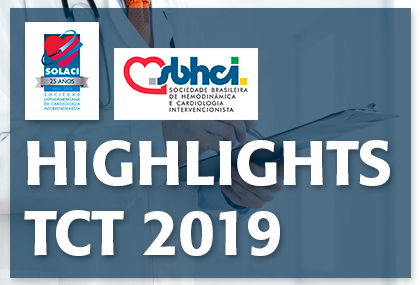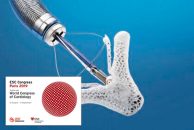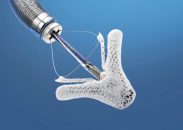Courtesy of SBHCI. This work, which was presented during the TCT 2019 Scientific Sessions and simultaneously published in the Lancet, randomized patients to the ACURATE Neo prosthesis (n = 373) vs. the SAPIEN 3 (n = 367) in a head-to-head comparison involving 20 European sites. Transfemoral access was used in all patients. The study had a noninferiority design, and its primary…
Very Encouraging Results for TAVR in Low-Risk Patients
Courtesy of Dr. Carlos Fava. About 12% of patients >75 years old have aortic stenosis. In 3%-4% of them, such disease is severe. Transcatheter aortic valve replacement (TAVR) has already proven to be beneficial for extreme-, high-, and intermediate-risk patients. Regarding low-risk patients, we currently have different analyses; two of them are randomized and their results are…
TAVR and Pacemakers, New Strategies
Courtesy of Dr. Carlos Fava. TAVR has been shown beneficial and is constantly being advanced onto lower risk populations, but at present, it is limited (perhaps most importantly in aortic tricuspid valves) by the need for permanent pacemaker implantation (PPMI), especially when it comes to self-expandable valves, as the latest study on low risk populations…
TAVR in Bicuspid Has the Same Results in Surgery at Hospital Level
Courtesy of Dr. Carlos Fava. Bicuspid aortic stenosis patients (bicuspid AS) represent a small group and have not been included in the larger transcatheter aortic valve replacement (TAVR) studies, since they present different morphology and asymmetric calcification, which might come along with more paravalvular leak and less accurate positioning. Between 2012 and 2016, 475,315 patients…
MitraClip in the Real World: Mid-Term Progress
Courtesy of Dr. Carlos Fava. The fact that the outcomes of edge-to-edge repair with MitraClip have improved, particularly in the immediate and short term, is widely known. Such improvement is basically a result of more operator experience and the arrival of 3-D echocardiography. However, there are no mid-term follow-up studies available, except for the EVEREST…
The Real Impact of Peripheral Artery Disease in TAVR
Courtesy of Dr. Carlos Fava. The real incidence of peripheral artery (PAD) disease in TAVR remains unclear. Different reports still estimate it is between 10 and 46%, but they have shown it has a negative impact in evolution. 51,685 TAVR patients were analyzed. 12,740 of these patients presented PAD (24.6%). PAD patients tended to be…
ESC 2019 | How Benign Is Moderate Aortic Stenosis?
Data from a great Australian registry of nearly 250,000 people with a 5-year follow-up, presented at the European Society of Cardiology (ESC) Congress 2019 in Paris and simultaneously published in J Am Coll Cardiol, suggest that mortality due to severe aortic stenosis is similar to that due to moderate aortic stenosis. These data warn us…
ESC 2019 | MITRA-FR: 2-Year Outcomes of One of the Largest Studies on MitraClip
Negative one-year outcomes of Mitra-FR led to several discussions and hypothesis, especially after the COAPT was published only a few weeks later. According to the COAPT study, the MitraClip was able to reduce hospitalization rate for cardiac failure and also all-cause mortality, compared against optimal medical treatment alone. When comparing the COAPT to the Mitra-FR,…
Experts Reach Consensus on Post TAVR Pacemaker Indication
This new consensus published this week in J Am Coll Cardiol has provided us with an algorithm to manage conduction disturbances after transcatheter aortic valve replacement. This consensus is intended to reduce potential deaths caused by conduction disturbances and, at the same time, reduce unnecessary definite pacemaker implantation. This document is a big step ahead…
Can We Treat Severe Residual Mitral Regurgitation after MitraClip without Surgery?
Courtesy of Dr. Carlos Fava. Edge to edge with MitraClip was shown effective and safe, and its outcomes have been improving over these past few years. However, one of its greatest challenges involves not being able to reduce mitral regurgitation (MR) after device implantation, resulting in the need for surgery, as some studies have shown…
Physiological and Clinical Changes After Tricuspid Repair
After the recent announcement by the US Food and Drug Administration (FDA) green-lighting transcatheter aortic valve replacement (TAVR) in patients across the whole spectrum, and given the advancements regarding devices already in the market (such as MitraClip) and a variety of pulmonary valves, there is only one territory left to conquer: the long forgotten tricuspid…










